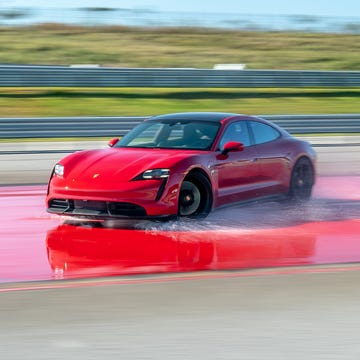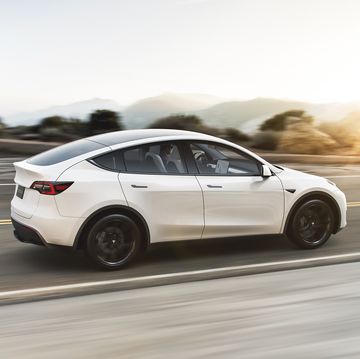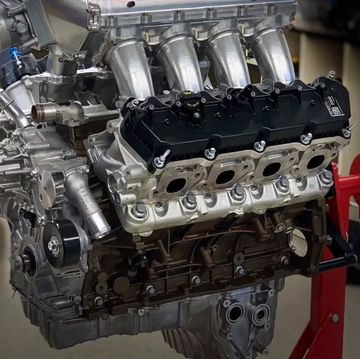For years, it seemed like the Mercedes-Benz G-Class could never die. Introduced on the civilian market in 1979, the model received notable equipment updates over the years—automatic transmissions in 1981, ABS in 1990, dual front airbags in 1996. It got an AMG-built V12 in 2002, the first year the model was officially sold in the United States, and underwent small cosmetic revisions, the last of which came in 2012.
But throughout the decades, the most notable thing about the G-Class has been how little it seemed to change. There was a major chassis update in 1990, and powertrain technology and interior luxury advanced dramatically over the years. But today, in 2018, you can walk into a Mercedes dealership and buy a brand-new G-Class that shares its dimensions, layout, suspension design and most of its bodywork with that first model that debuted 39 years ago.
For 2019, that all changes drastically. After nearly four decades, Mercedes-Benz is completely revamping the G-Class. To lovers of the stalwart, charmingly ancient machine, it almost seems foolhardy: The upright off-roader sells in droves precisely because of how timeless (some might say archaic) it is. Why mess with a good thing?
At the media launch of the all-new 2019 Mercedes-Benz G550 and Mercedes-AMG G63, I posed this question to Ian Hadley James, the Mercedes marketing executive responsible for the G-Class range.
"In terms of change, we've been doing that throughout the past 39 years," James told me. "Having said that, in a 39-year history, you’re going to reach a point where the jump you need to take to future-proof it is more significant than those steps we’ve made in the past."
The planning for the new model began in 2012. "Our idea was not to have a completely new vehicle, only a facelift," Kurt Tomberger, Strategic Project Manager for the G-Class, told me. "When we started, we had the idea not to modify the whole vehicle."
The goal, he said, was to improve the on-road comfort of the G-Class without negatively impacting its off-road prowess. Tomberger's team started with the steering. If you've ever twirled the tiller on a G-Class, you know the steering system comes from deep in the last century. The recirculating-ball setup was firm to the point of taxing your forearms and reluctant to center itself, with a dead spot in the middle that made every lane change a gamble.
So Mercedes decided to switch to a modern, variable-ratio rack-and-pinion steering system with adaptive electric power assist. This upgrade would finally allow the automaker to bless the G-Class with safety and convenience technologies that have graced its other offerings for years: Active lane-keeping assist, Pre-Safe collision avoidance systems, and self-parking capability—all of which require the car to occasionally steer itself, a capability not compatible with the old hydraulic recirculating-ball steering system.
That one upgrade required a seismic change to the G-Class chassis. Rack-and-pinion steering can't be adapted to work with a solid front axle, the suspension design that gave the G-Class its legendary off-road performance and durability. Mercedes would have to upgrade the G to independent front suspension. (Thankfully, the solid rear axle remains.)
Designing an independent suspension robust and flexible enough to maintain the G-Class's off-road performance required big changes elsewhere. The end result: An all-new ladder frame and completely redesigned body, both optimized to be lighter and stiffer than the outgoing model. "It was a domino effect," Tomberger told me. "We change this, and the consequence changes that."
Then there were the safety updates. When the G-Class design was first penned, crash testing was in its infancy. Today, it's the main driving force in automobile design. New European regulations for the 2019 model year demand major improvements in pedestrian impact safety. The new rules require significant open space between a car's grille and hood and the rigid components (radiator, intake, engine cover) beneath, to create a crumple zone to mitigate injury to legs and heads. In an old G-Class, such space simply doesn't exist, and moving the powertrain around wasn't a viable option.
That, plus ever-tightening front- and side-impact crash testing in Mercedes' markets worldwide, led to the most visually noticeable update to the G-Class: A body that is now 2.1 inches longer and three inches wider, sitting on a 1.6-inch longer wheelbase. Some of that added space shows up in the interior—the rear seat, finally, is wide enough for three human-size occupants, and front-seat passengers no longer rub shoulders on rough terrain—but a good portion of the added width goes into the doors and pillars, beefing up the vehicle's side-impact safety.
Regarding the new safety requirements, James told me, "we could have tweaked the existing one to make sure that we could fulfill those. But when you bring everything together—the new powertrains, the opportunity to make that step-change in terms of on-road performance, interior, safety, you get to a point where it all adds up. We decided, let’s invest to make it future-proof.
"It was a necessary thing to do," he added. "It was just the right timing. Everything sort of fit together."

















